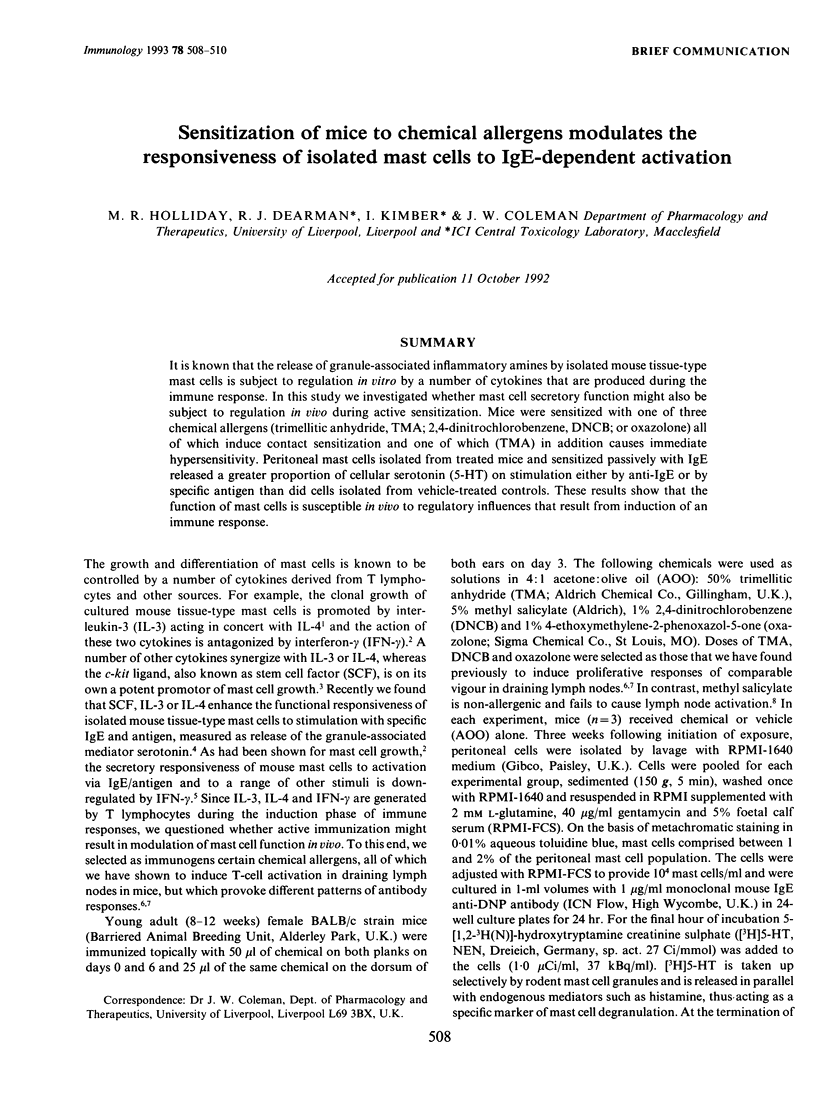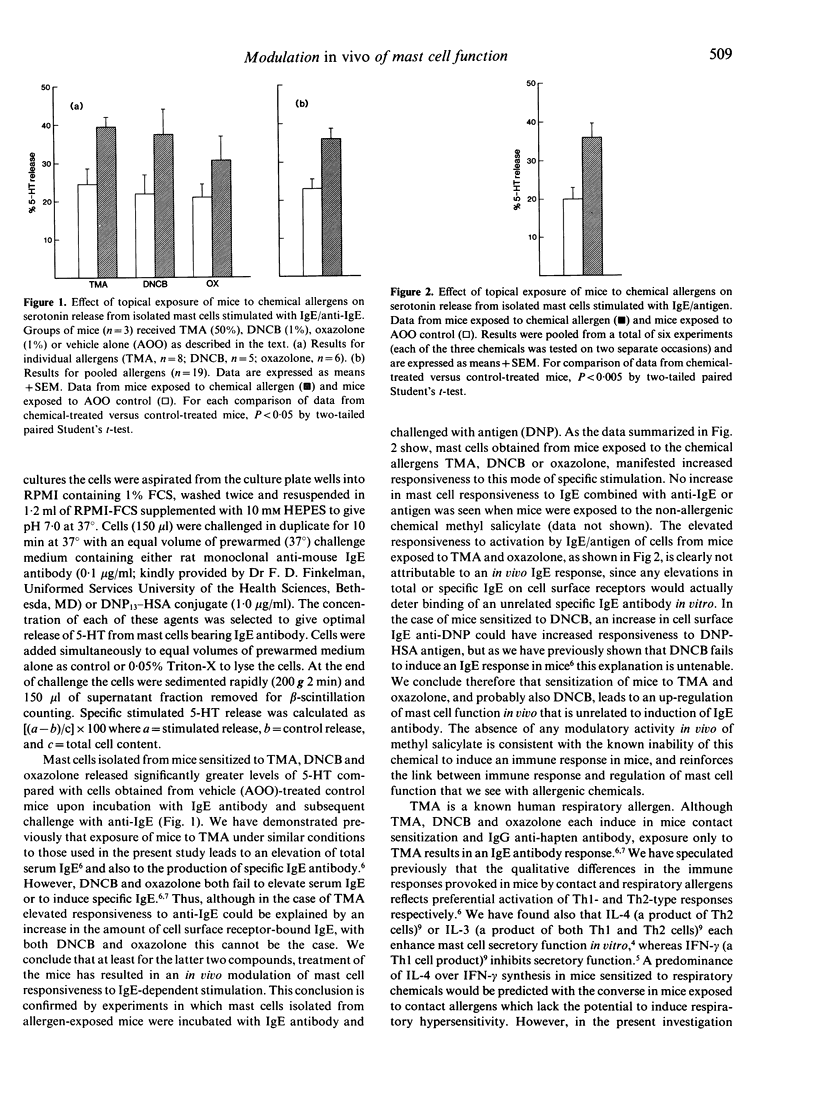Abstract
It is known that the release of granule-associated inflammatory amines by isolated mouse tissue-type mast cells is subject to regulation in vitro by a number of cytokines that are produced during the immune response. In this study we investigated whether mast cell secretory function might also be subject to regulation in vivo during active sensitization. Mice were sensitized with one of three chemical allergens (trimellitic anhydride, TMA; 2,4-dinitrochlorobenzene, DNCB; or oxazolone) all of which induce contact sensitization and one of which (TMA) in addition causes immediate hypersensitivity. Peritoneal mast cells isolated from treated mice and sensitized passively with IgE released a greater proportion of cellular serotonin (5-HT) on stimulation either by anti-IgE or by specific antigen than did cells isolated from vehicle-treated controls. These results show that the function of mast cells is susceptible in vivo to regulatory influences that result from induction of an immune response.
Full text
PDF


Selected References
These references are in PubMed. This may not be the complete list of references from this article.
- Coleman J. W., Buckley M. G., Holliday M. R., Morris A. G. Interferon-gamma inhibits serotonin release from mouse peritoneal mast cells. Eur J Immunol. 1991 Oct;21(10):2559–2564. doi: 10.1002/eji.1830211037. [DOI] [PubMed] [Google Scholar]
- Coleman J. W., Holliday M. R., Kimber I., Zsebo K. M., Galli S. J. Regulation of mouse peritoneal mast cell secretory function by stem cell factor, IL-3 or IL-4. J Immunol. 1993 Jan 15;150(2):556–562. [PubMed] [Google Scholar]
- Dearman R. J., Kimber I. Differential stimulation of immune function by respiratory and contact chemical allergens. Immunology. 1991 Apr;72(4):563–570. [PMC free article] [PubMed] [Google Scholar]
- Dearman R. J., Kimber I. Divergent immune responses to respiratory and contact chemical allergens: antibody elicited by phthalic anhydride and oxazolone. Clin Exp Allergy. 1992 Feb;22(2):241–250. doi: 10.1111/j.1365-2222.1992.tb03079.x. [DOI] [PubMed] [Google Scholar]
- Kimber I., Hilton J., Botham P. A., Basketter D. A., Scholes E. W., Miller K., Robbins M. C., Harrison P. T., Gray T. J., Waite S. J. The murine local lymph node assay: results of an inter-laboratory trial. Toxicol Lett. 1991 Feb;55(2):203–213. doi: 10.1016/0378-4274(91)90135-s. [DOI] [PubMed] [Google Scholar]
- Mosmann T. R., Coffman R. L. Heterogeneity of cytokine secretion patterns and functions of helper T cells. Adv Immunol. 1989;46:111–147. doi: 10.1016/s0065-2776(08)60652-5. [DOI] [PubMed] [Google Scholar]
- Takagi M., Koike K., Nakahata T. Antiproliferative effect of IFN-gamma on proliferation of mouse connective tissue-type mast cells. J Immunol. 1990 Sep 15;145(6):1880–1884. [PubMed] [Google Scholar]
- Tsai M., Takeishi T., Thompson H., Langley K. E., Zsebo K. M., Metcalfe D. D., Geissler E. N., Galli S. J. Induction of mast cell proliferation, maturation, and heparin synthesis by the rat c-kit ligand, stem cell factor. Proc Natl Acad Sci U S A. 1991 Jul 15;88(14):6382–6386. doi: 10.1073/pnas.88.14.6382. [DOI] [PMC free article] [PubMed] [Google Scholar]
- Tsuji K., Nakahata T., Takagi M., Kobayashi T., Ishiguro A., Kikuchi T., Naganuma K., Koike K., Miyajima A., Arai K. Effects of interleukin-3 and interleukin-4 on the development of "connective tissue-type" mast cells: interleukin-3 supports their survival and interleukin-4 triggers and supports their proliferation synergistically with interleukin-3. Blood. 1990 Jan 15;75(2):421–427. [PubMed] [Google Scholar]


